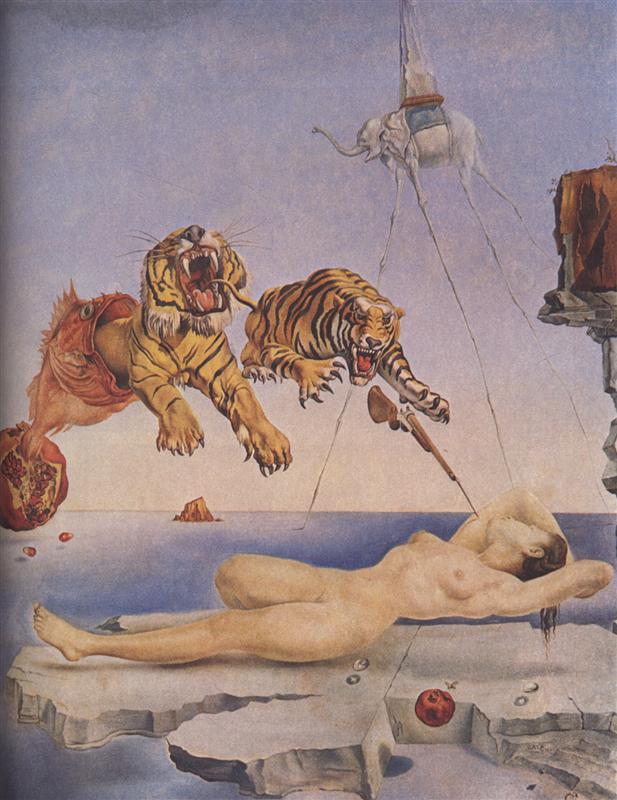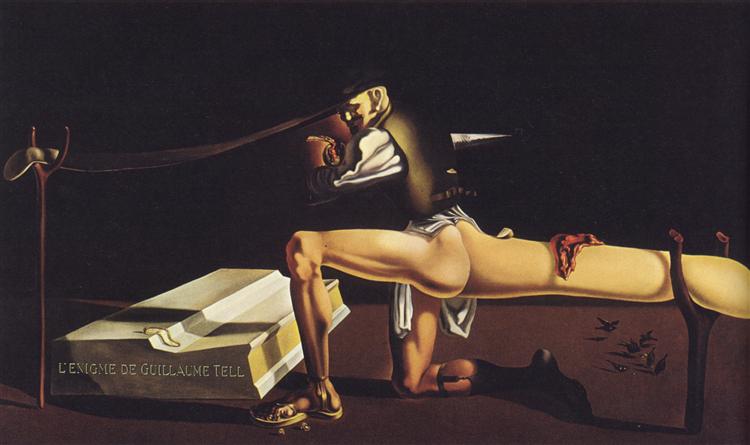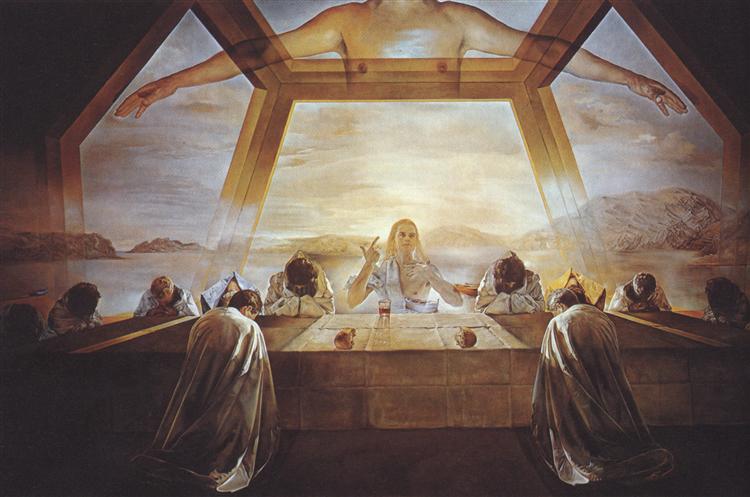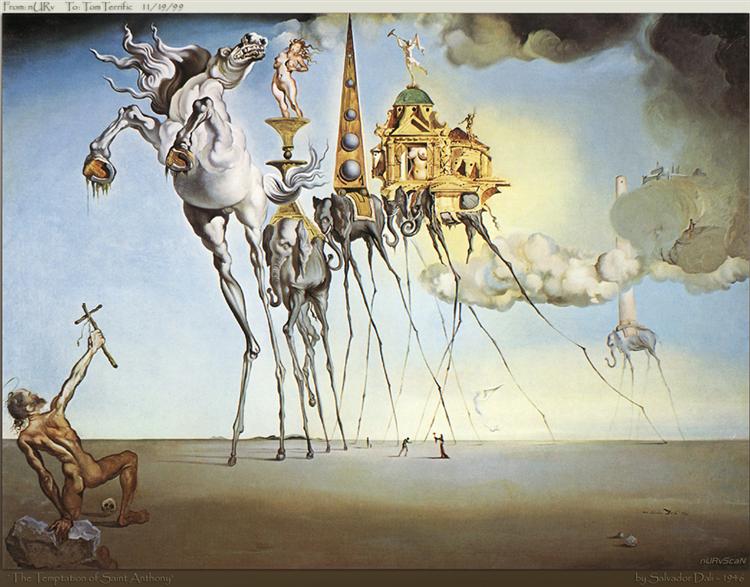The longest, coherent and most impressive dreams are seen by a person just before awakening. Sleep can last for several seconds, but subjectively leave the feeling of several hours full of events. The world of dreams is exactly the space where time is counted according to the Soft clock of Salvador Dali – and they, according to the master, always show the exact time.
Tigers descended from the circus posters fly forward. Claws are extended, jaws are open, menacing fangs bared in a paroxysm of rage. One tiger emerges from the mouth of another. He, in turn, jumps out of the mouth of a huge fish, and she emerges from a giant pomegranate with a ripped skin.
Two pomegranate seeds glow with drops of blood over the sleepy surface of the sea. This suite of images will inevitably remind the viewer of a matryoshka doll – or Kashcheev’s death, hidden in hidden caches nested in each other.
The space to the horizon is filled with a serene motionless sea. This is the matter of sleep: the very Unconscious, from which, as from intrauterine waters, images and plots are born. Far away, almost at the horizon, a rocky island rises from the water, and sandstone rocks turn yellow at the edge of the canvas, without which Dali could not imagine a seascape.
These stones, intricately cut by waves and ruthless Catalan winds, inspired the artist to create dual images and deceptive illusions when one image flows into another, just as cracks in a stone fold into new and new paintings.
In the background, right on the water, an elephant is walking on spider legs. He, like the famous sculpture from the Roman square of Minerva, the elephant Bernini, carries an obelisk-crystal on his back. His paradoxically thin legs will make the waking viewer amazed, but in a dream anything is possible. Including combining the incompatible and challenging the laws of gravity.
Gala’s naked body, hovering above a stone slab, also argues with gravity. Her head is thrown back, her hands are behind her head, one leg is bent. It looks like an allegory of peaceful sleep, in harmony with the serene seascape.
The more striking is the contrast between the statics of the female body and the dynamics of violent aggressive images. This dissonance is further enhanced by a rifle with a mounted bayonet, which froze in millimeters from the skin of the sleeping Gala.
Next to her, tiny against the background of images generated by the subconscious, a pomegranate fruit hovers. He, unlike the giant dream-grenade, is real. A bee hovers around him.
It is no coincidence that both the pomegranate and the bee got into this sleepy kingdom. They served as the catalyst for all this feast of dreams. The buzzing of a bee created a series of disturbing pictures in the sleeping woman’s head. A prick with the tip of a bayonet became the logical conclusion of the dream plot, replacing a bee sting in this reality. A little further off, a pair of sea shells hovered over the stone – mathematically perfect forms that Dali so admired.
They look like a tiny but integral touch that completes the picture of an ideal dream. And all this triumph of the unconscious, blessed by the teachings of Freud, overshadows the flawed moon, the ghostly luminary of the world of dreams.
Year of painting: 1944.
Dimensions of the painting: 51 x 41 cm.
Material: canvas.
Writing technique: oil.
Genre: symbolic painting.
Style: surrealism.
Gallery: Thyssen-Bornemisza Museum, Madrid, Spain.



